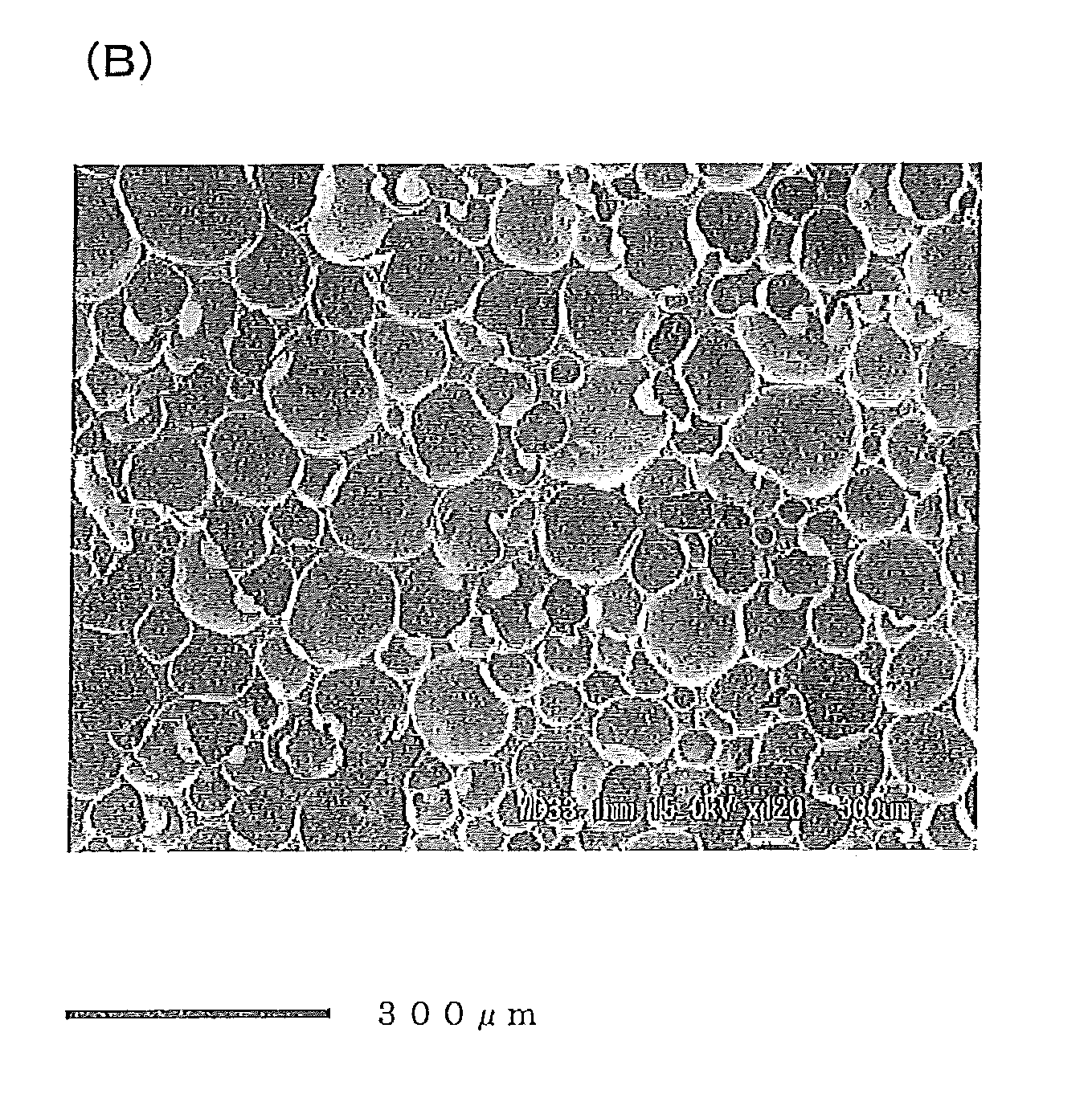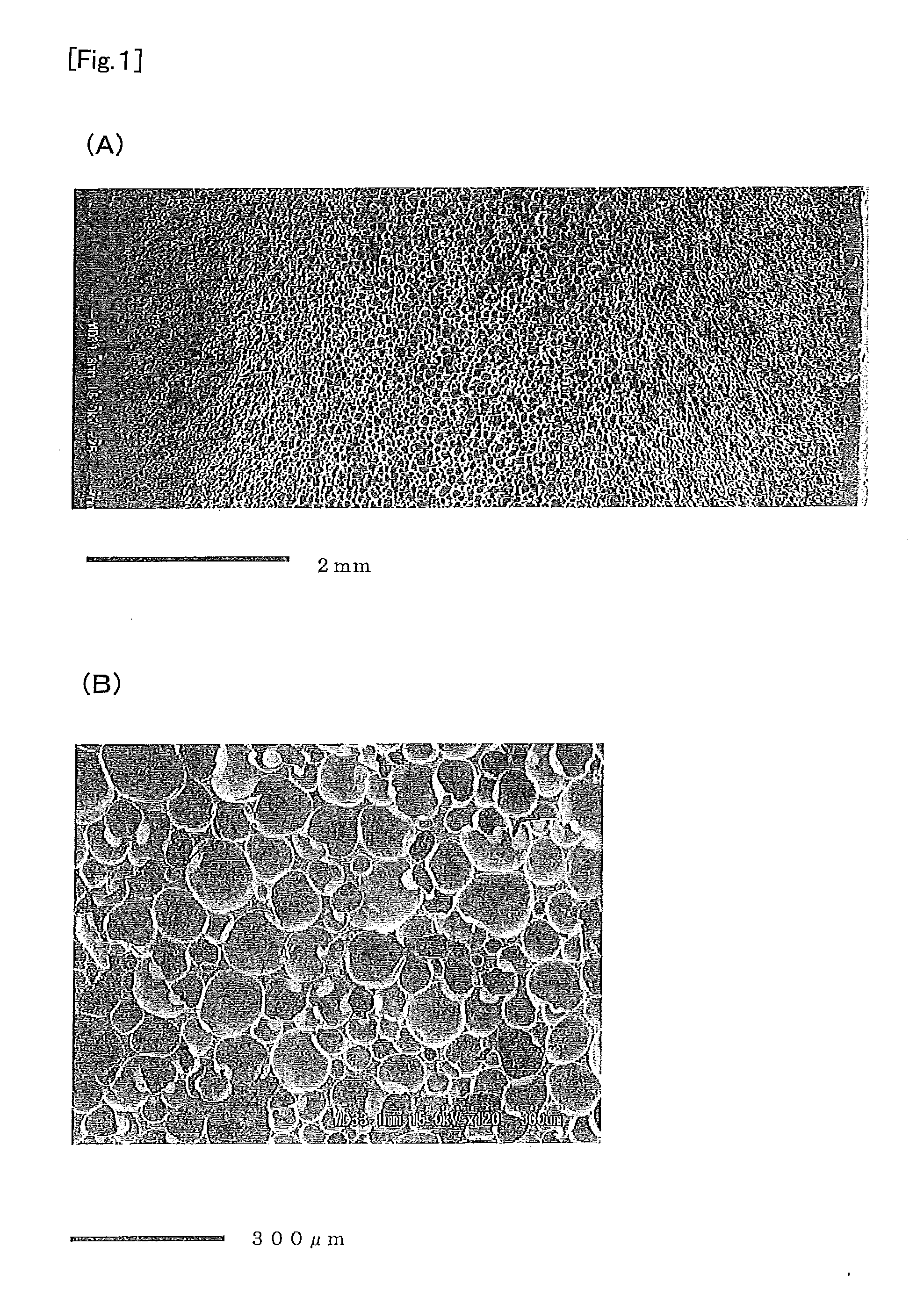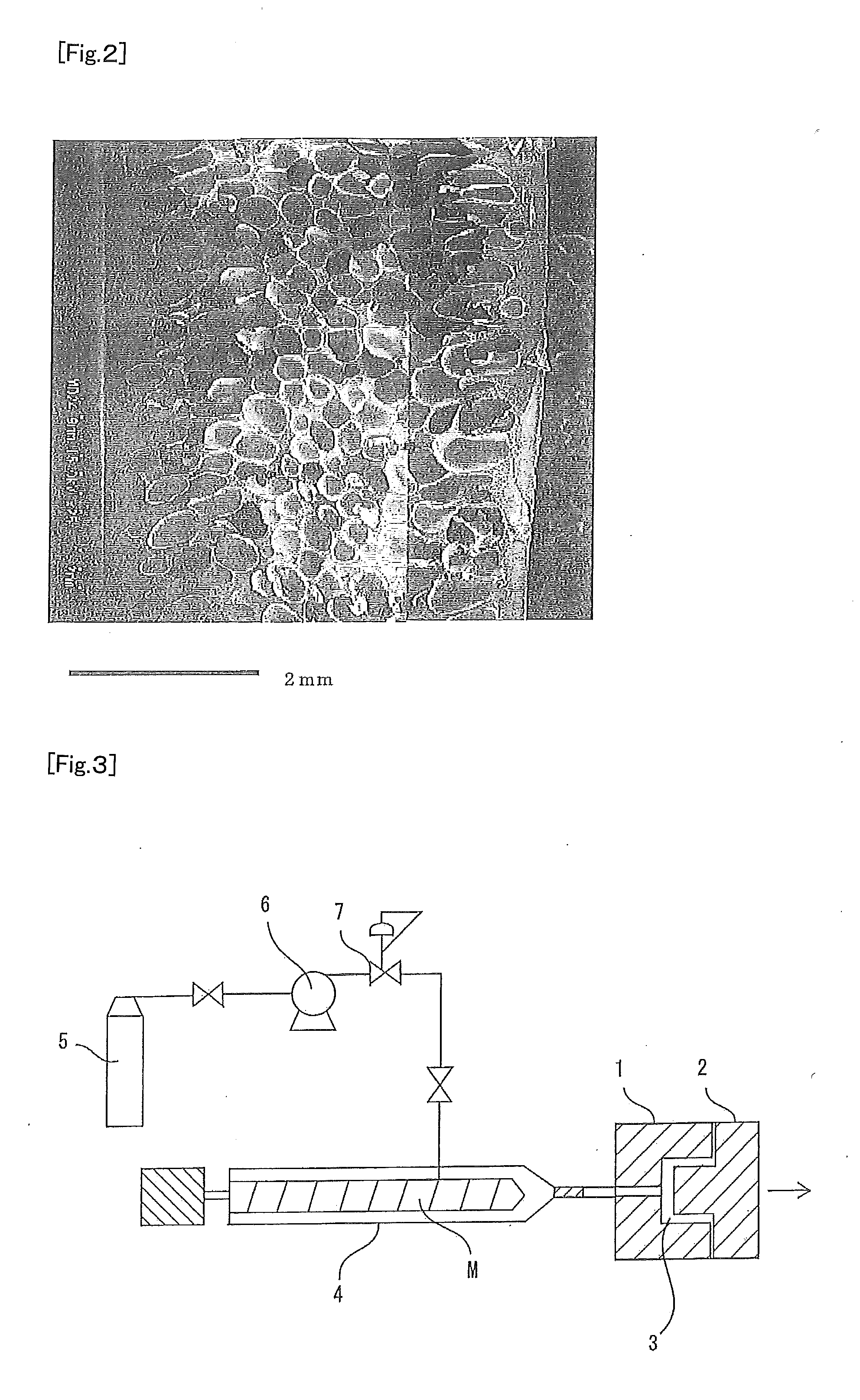Polyamide resin composition, expanded polyamide resin molding, and automotive resin molding
- Summary
- Abstract
- Description
- Claims
- Application Information
AI Technical Summary
Benefits of technology
Problems solved by technology
Method used
Image
Examples
examples
[0131]The present invention will be described in more detail below with reference to Examples, but the invention is not limited thereto.
[0132]The measured values disclosed in the Examples are values measured by the following methods.
[0133]
[0134]Each sample was weighed (2 mg), dissolved in 4 mL of a 10 mM hexafluoroisopropanol (HFIP) / sodium trifluoroacetate solution, and then filtered through a 0.2 μm membrane filter. For the resulting sample solution, gel permeation chromatography (GPC) analysis was conducted under the following conditions to measure a number average molecular weight. The molecular weight was converted in terms of a standard polymethyl methacrylate and was calculated with the exclusion of molecules having molecular weights of 1000 or less as oligomers.
Instrument: “HLC-8220GPC” manufactured by TOSOH
Column: “TSKgel SuperHM-HX2” and “TSKgel SuperH2000” manufactured by TOSOH
Flow rate: 0.25 mL / minute
Concentration: 0.05% by mass
Temperature: 40° C.
Detector: RI
[0135]
[0136]A...
examples 1-1 to 1-39
and Comparative Examples 1-1 to 1-16
[0187]The use amounts of the above-described raw materials (A) to (C) were determined as shown in Tables 1 to 6, and regarding the use amounts of other additives in Examples and Comparative Examples, the amount of the stabilizer was set to 0.3 parts by mass, the amount of the release agent was set to 0.3 parts by mass, and the amount of the black pigment was set to 1.0 part by mass. These materials were mixed with a 35φ twin screw extruder (manufactured by Toshiba Machine Co., Ltd.). Specifically, the polyamide resin (A), the glycidyl group-containing styrene copolymer (B), and the other additives (the stabilizer, the release agent, and the black pigment) were charged first simultaneously through a hopper at a screw rotation speed of 100 rpm, followed by melt-kneading, and then the inorganic reinforcing material (C) was charged by side feeding. At this time, the cylinder temperature was set to 280° C. when polyamide 66-1 (a3) was used as the polya...
examples 2-1 to 2-20
and Comparative Examples 2-1 to 2-9
[0192]The use amounts of the above-described raw materials (A) to (C) were determined as shown in Tables 7 to 9, and regarding the use amounts of other additives in Examples and Comparative Examples, the amount of the stabilizer was set to 0.3 parts by mass, the amount of the release agent was set to 0.3 parts by mass, and the amount of the black pigment was set to 1.0 part by mass. These materials were mixed with a 35φ twin screw extruder (manufactured by Toshiba Machine Co., Ltd.). Specifically, the polyamide resin (A) (the crystalline polyamide resin (a) and the noncrystalline polyamide resin (b)), the glycidyl group-containing styrene copolymer (B), and the other additives (the stabilizer, the release agent, and the black pigment) were charged first simultaneously through a hopper at a screw rotation speed of 100 rpm, followed by melt-kneading, and then the inorganic reinforcing material (C) was charged by side feeding. At this time, the cylind...
PUM
| Property | Measurement | Unit |
|---|---|---|
| Percent by mass | aaaaa | aaaaa |
| Percent by mass | aaaaa | aaaaa |
| Percent by mass | aaaaa | aaaaa |
Abstract
Description
Claims
Application Information
 Login to View More
Login to View More - R&D
- Intellectual Property
- Life Sciences
- Materials
- Tech Scout
- Unparalleled Data Quality
- Higher Quality Content
- 60% Fewer Hallucinations
Browse by: Latest US Patents, China's latest patents, Technical Efficacy Thesaurus, Application Domain, Technology Topic, Popular Technical Reports.
© 2025 PatSnap. All rights reserved.Legal|Privacy policy|Modern Slavery Act Transparency Statement|Sitemap|About US| Contact US: help@patsnap.com



